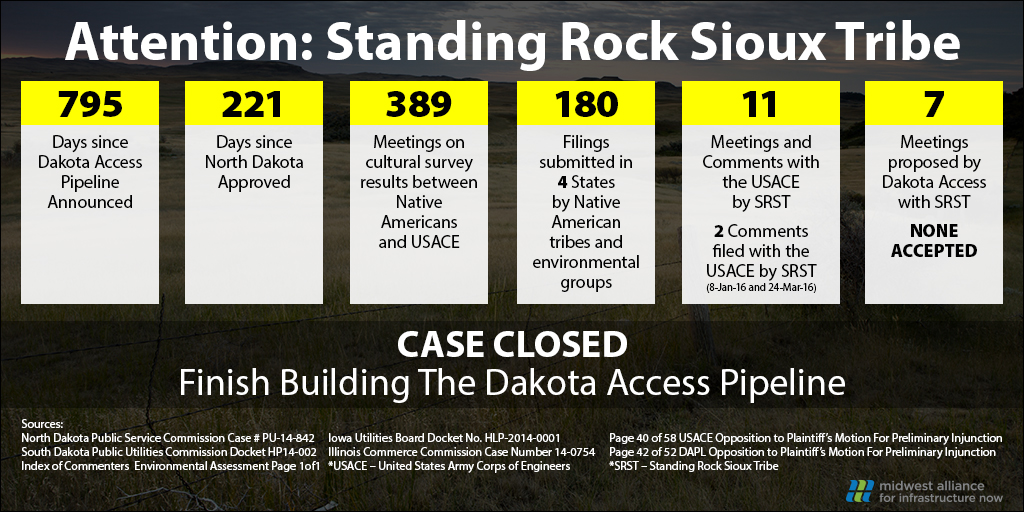Today, The Hill, published a piece by MAIN Coalition spokesman Craig Stevens where articulated the facts behind the Dakota Access Pipeline project.
Stevens wrote, “During the ongoing protests of the Dakota Access Pipeline, the public has had a harder time getting to the facts about this important project. Untrue claims are circulating again, and the record needs to be set straight.”
Some of the important facts raised include:
- The pipeline does not cross reservation land, and runs almost entirely on private property. In fact the pipeline parallels an energy corridor of electrical transmission lines and the Northern Border Pipeline across Lake Oahe.
- The entire route through North Dakota was approved by the North Dakota Historic Preservation Office.
- Native American tribes had multiple opportunities for input with the U.S. Army Corps of Engineers throughout the permitting process.
- Multiple meetings were held with community leaders and the public throughout the review phase of the project.
- The U.S. District Court for the District of Columbia denied the Standing Rock Sioux Tribe’s request to halt construction of the pipeline near its reservation. Judge Boasberg concluded after an extensive review that “the Tribe has not shown it will suffer injury” if construction proceeds as planned.
Through all of the noise of this very public protests, these facts remain the same and should guide any future intellectual discussion on the pipeline. Inciting violence, trespassing, or damaging property is





